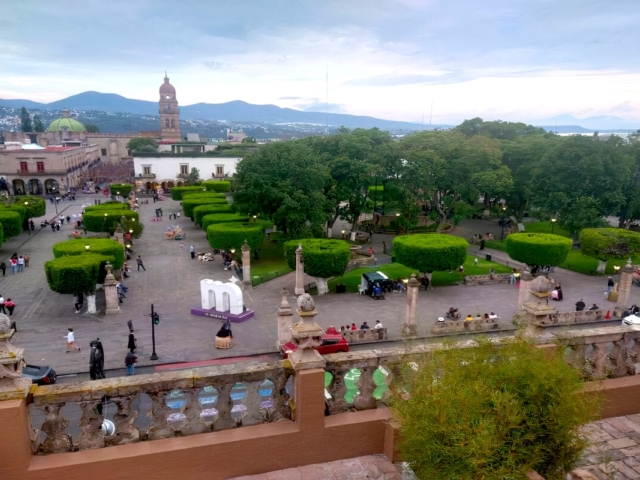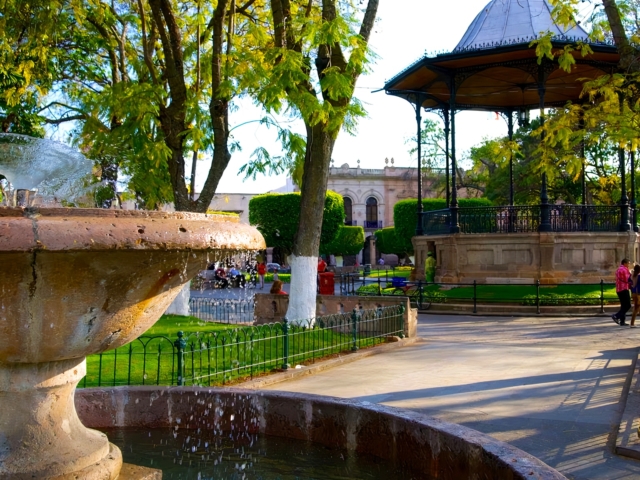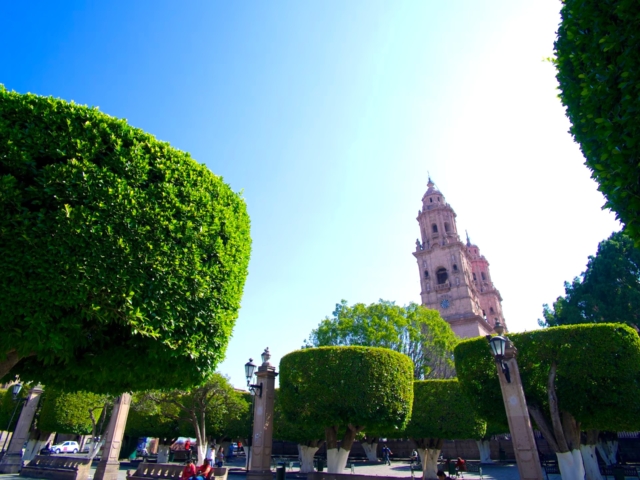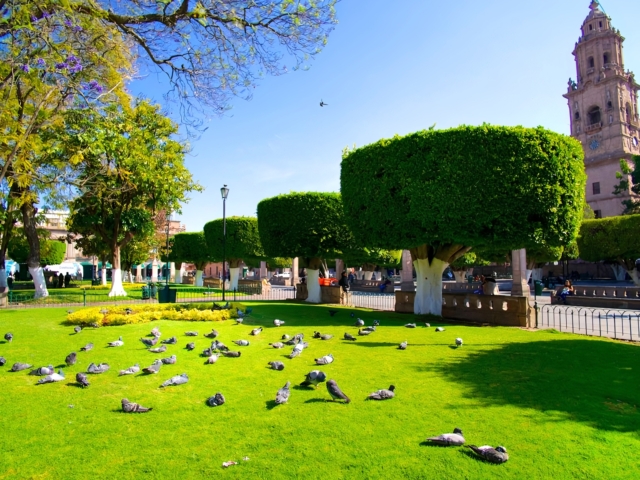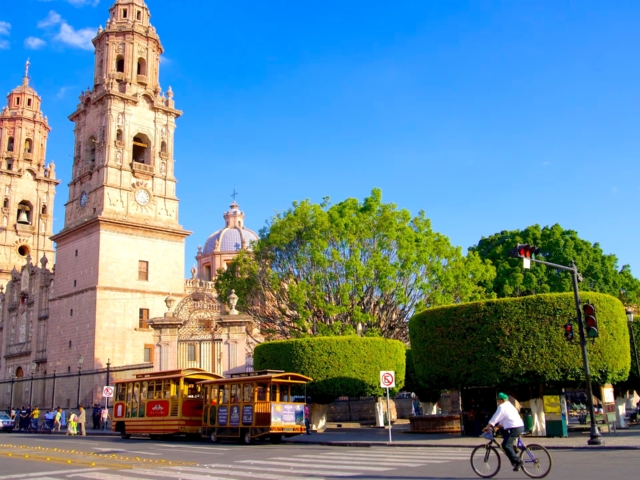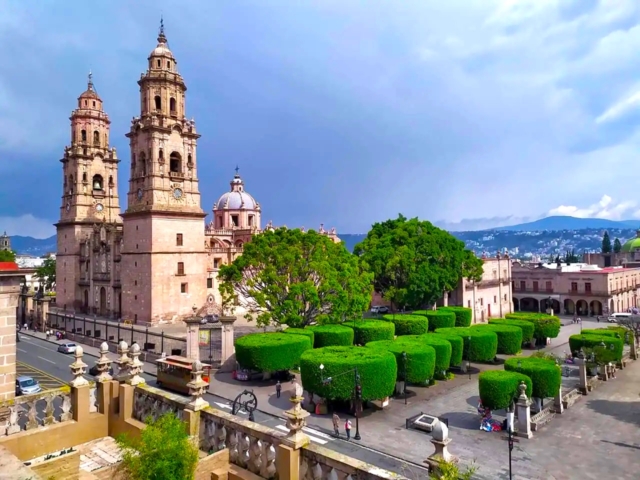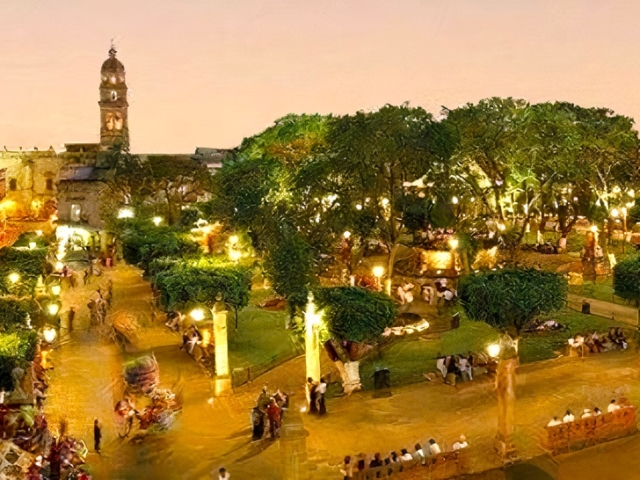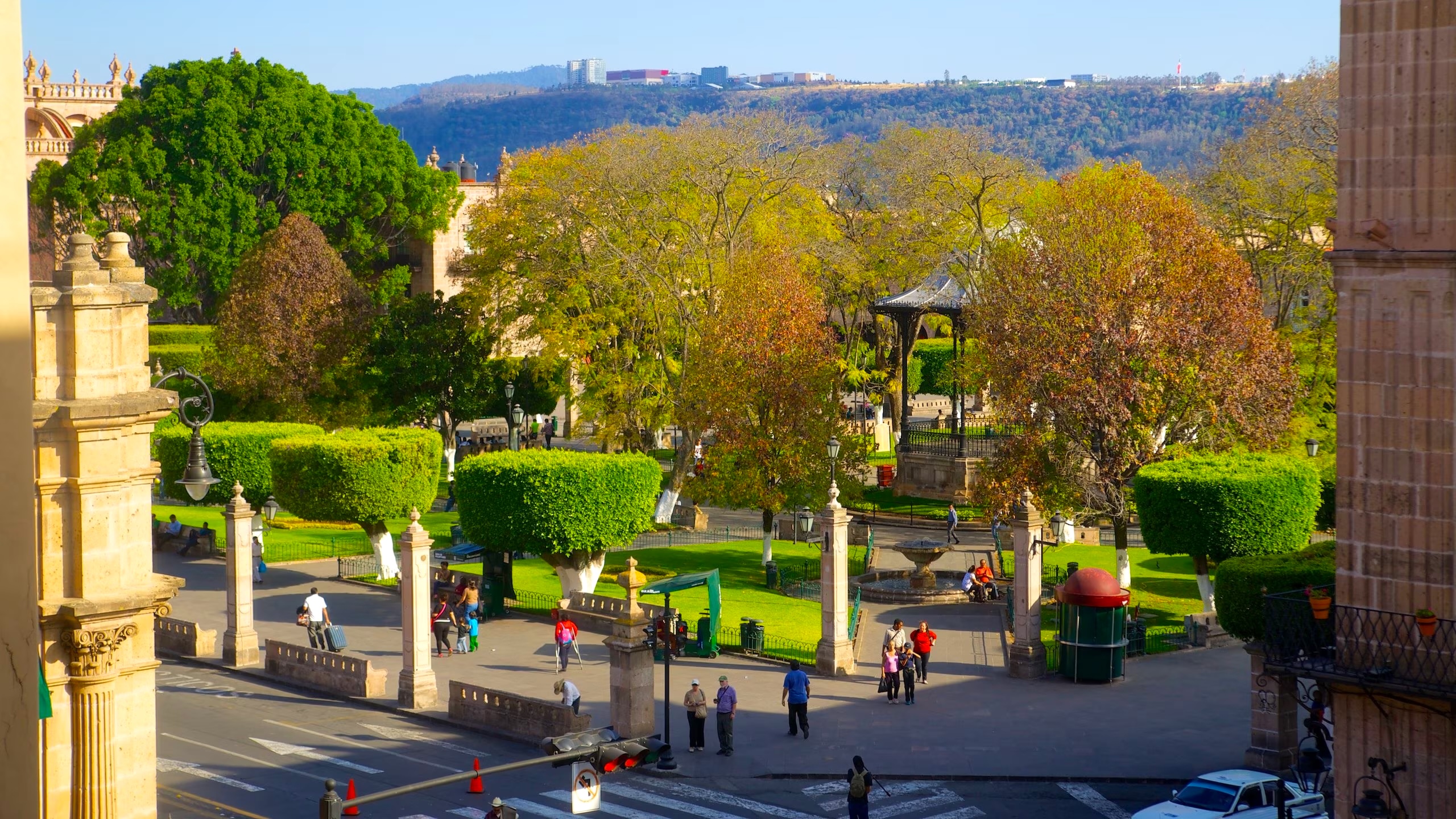
Adress
Plaza de Armas, Centro, 58000 Morelia, Michoacán, México.
GPS
19.702354628473, -101.19366288185
KNOW MORE PLACES
VISITA OTRAS LOCALIDADES
Morelia's main square is one of the most deeply rooted public spaces in the daily life of the capital's population. Thousands of families usually come to this place every day to rest in the shade of the trees.
It is important to remember that the first square of the city originally had a large square known as Plaza Mayor. This square covered approximately the entire area occupied today by the Plaza de Armas, Plaza Benito Juárez, the Metropolitan Cathedral and the Plaza Melchor Ocampo. The construction of the Cathedral was what divided this large square into the spaces we know today.
According to historical sources, this single plaza existed until the 16th century. It was around 1577 when it began to be divided to make way for the construction of the first version of the main religious building in the state of Mexico. In 1660, work began on the cathedral as we know it today, permanently dividing the old esplanade. Other sources indicate that during the approximately 100 years that the construction of the cathedral lasted, the space of the Plaza de Armas was used for workshops and warehouses.
However, it was in a later period that this public space acquired the name and identity it retains today. The Plaza de Armas or Plaza de los Mártires gets its name because, beginning in the 17th century, numerous public executions were carried out here. According to historical archives, José Guadalupe Salto, an insurgent colonel, and Miguel Gómez, parish priest of Petatlán, were two of the individuals accused of supporting the independence cause and were executed in the plaza between 1812 and 1813. In 1830, other figures defending federalism suffered the same fate. However, it is noteworthy that the most relevant personality who lost his life here was Mariano Matamoros, whose name is preserved in the area through the Portal Matamoros and the adjacent theater that bears his name.
Following the evolution of the Plaza de Armas, its current layout can be traced back to around the 19th century. Its central kiosk is estimated to have been built around 1887. There is also evidence of renovations carried out around 2004, and the municipal government carried out a restoration of the kiosk in 2016.
Today, the Plaza de Armas is bordered by Allende Street to the south, Abasolo Street to the west, Madero Avenue to the north, and Plaza Benito Juárez to the east. It is also bordered by the Michelena, Matamoros, and Hidalgo Portals in the same order. This public space is dominated by a kiosk in its center, along with two lateral fountains and gardens distributed around these elements. The plaza is very popular throughout the year, hosting cultural activities in its kiosk during national holidays and the city's anniversary. In addition, it is decorated as an altar during the Night of the Dead and as a nativity scene during Christmas celebrations.
Thousands of Morelians use the plaza daily, some cross it on foot to get to their workplaces, banks or restaurants in the Historic Center. Others choose to sit and enjoy the shade or rest before continuing with their activities.


